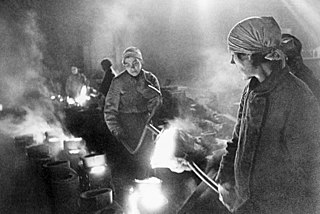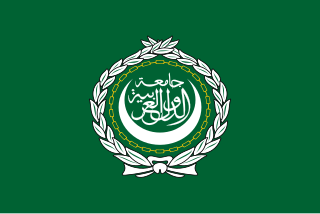See also
General history
Military history articles by region
Categories
- Category: Military history by continent
- Category: Military history by country
- Category: Military history by period
Lists of wars by date | |
|---|---|
| Africa |
| ||||||||||
|---|---|---|---|---|---|---|---|---|---|---|---|
| Americas |
| ||||||||||
| Asia |
| ||||||||||
| Europe |
| ||||||||||
This article provides a list of articles which contain lists of wars and conflicts.
There are various sets of such lists, based upon different criteria for grouping individual wars, as shown below.
Below is a set of articles which each provide a list of wars within a specific time period, each covering at least several decades or more.

The history of Europe is traditionally divided into four time periods: prehistoric Europe, classical antiquity, the Middle Ages, and the modern era.
Lists of battles contain links to sets of articles on battles. They may be organized alphabetically, by era, by conflict, by participants or location, or by death toll. See Category:Battles for a complete list of articles on battles.
Naval warfare is combat in and on the sea, the ocean, or any other battlespace involving a major body of water such as a large lake or wide river.
The European–African–Middle Eastern Campaign Medal is a military award of the United States Armed Forces which was first created on November 6, 1942, by Executive Order 9265 issued by President Franklin D. Roosevelt. The medal was intended to recognize those military service members who had performed military duty in the European Theater during the years of the Second World War.

Military production during World War II was the production or mobilization of arms, ammunition, personnel and financing by the belligerents of the war, from the occupation of Austria in early 1938 to the surrender and occupation of Japan in late 1945.

The military history of Germany spans the period from ancient times to the present.
The modern era or the modern period, also known as modern history or modern times, is the period of human history that succeeds the post-classical era, which ended around 1500 AD, up to the present. This terminology is a historical periodization that is applied primarily to European and Western history.
History is the study of the past. When used as the name of a field of study, history refers to the study and interpretation of the record of humans, families, and societies as preserved primarily through written sources. This is a list of history topics covered on English Wikipedia:
The military history of Africa is one of the oldest military histories in the world. Africa is a continent of many regions with diverse populations speaking hundreds of different languages and practicing an array of cultures and religions. These differences have also been the source of much conflict since a millennia.
The following outline is provided as an overview of and topical guide to World War II:

When the United Kingdom declared war on Nazi Germany in September 1939 at the start of World War II, it controlled to varying degrees numerous crown colonies, protectorates, and India. It also maintained strong political ties to four of the five independent Dominions—Australia, Canada, South Africa, and New Zealand—as co-members of the then "British Commonwealth". In 1939 the British Empire and the Commonwealth together comprised a global power, with direct or de facto political and economic control of 25% of the world's population, and of 30% of its land mass.

Military history is the study of armed conflict in the history of humanity, and its impact on the societies, cultures and economies thereof, as well as the resulting changes to local and international relationships.

Arab–American relations comprise a rich and nuanced narrative shaped by centuries of interaction, diplomacy, and exchange between the United States and the Arab world. Rooted in historical trade routes and cultural connections dating back to antiquity, the modern iteration of these relations has been profoundly influenced by geopolitical dynamics, economic interests, and cultural exchanges. The United States' engagement with the Arab world gained significant momentum in the aftermath of World War II, as American interests in the region expanded alongside the emergence of Arab nationalism and the pursuit of self-determination. Throughout the Cold War era, the United States navigated intricate alliances and rivalries within the Arab world, often driven by strategic considerations, such as access to oil resources and containment of Soviet influence.
The role that women have played in wartime throughout History is something that cannot be understated because it was impactful and influential. California, during World War II, and the role that women played in upholding the defense industry specifically, is a prime example of just how important women were to the war effort. The airframe industry in California was one that saw dramatic growth in a very short period of time as World War II began. When the United States officially became involved, many men who were working in the airframe plants left to join the services and serve their country overseas. This caused a major labor shortage in the airframe industry that was needed to produce planes at a higher rate than ever before. At first, many of the manufacturers of aircraft were reluctant to hire women but eventually had to because the demand was high for America to keep up with demand. Donald Douglas was the founder of the Douglas Aircraft Company which was a major producer of aircraft during World War II. Donald Douglas stated “Men are more stable and efficient. Without women, no distractions are present in the canteen or the shop floor.” However, this resentment towards women in the workplace changed drastically as the war raged on. According to the California Labor Review, California airframe industries began to hire women to fill in the labor shortages. In 1942, there were fewer than 10,000 women working in the California airframe industry but less than a year later in 1943, that number jumped to over 120,000. Women were essential to the war effort on the home front in many ways but the airframe industry in California is just a small example. After the war, however, many women lost their airframe jobs in the defense industry because the factories returned the job to the men coming home from war. Housewives were a large number of workers who withdrew from the workforce as a result of the war ending. No matter how history frames the influence that women had in World War II on the homefront, the role that women played in the war effort was essential to the United States and its victory in the war.
The following outline is provided as an overview of and topical guide to war:

This article covers worldwide diplomacy and, more generally, the international relations of the great powers from 1814 to 1919. This era covers the period from the end of the Napoleonic Wars and the Congress of Vienna (1814–1815), to the end of the First World War and the Paris Peace Conference (1919–1920).